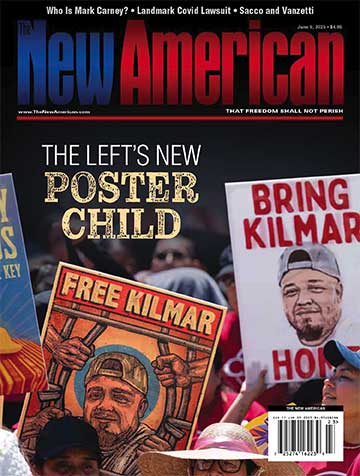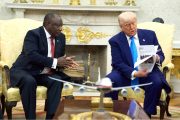
An unnamed senior UN official announced on January 25 that the world body wants to establish a force of about 2,500 troops — which the UN called an “intervention brigade” — in the Democratic Republic of the Congo. A VOA News report noted that the brigade would be part of the larger UN mission in D.R. Congo (previously known also as the Republic of the Congo and Zaire) that numbers about 17,000 troops. The present UN force is known as known as MONUSCO (the United Nations Organization Stabilization Mission in the DR Congo).
UN officials initially said that they were expecting a regional agreement on the Congo to be signed January 28 by the presidents of the Democratic Republic of Congo, Rwanda, Uganda, Burundi, Angola, the Republic of Congo, South Africa, and Tanzania at the African Union summit in Addis Ababa. However, a follow-up VOA report on that date announced that the anticipated deal that would have included the troop increase unexpectedly fell through.
However, Reuters news reported on January 26 that UN Secretary-General Ban Ki-moon will recommend to the UN Security Council that a “peace enforcement unit” be deployed in eastern D.R. Congo.
“It is not simply peacekeeping; this is peace enforcement. It’s a much more robust stance,” the report quoted the unnamed official. “It will be a deterrent against the armed groups” — groups such as M23, short for the March 23 Movement, and the FDLR (Democratic Forces for the Liberation of Rwanda).
According to the U.S. National Counterterrorism Center’s 2009 Report on Terrorism, the FDLR is believed to have been responsible for about a dozen terrorist attacks committed in 2009.
Reuters notes that the Congolese army has been unable to counter an insurgency by members of M23, causing conflict in Congo’s eastern region.
The New American reported back on November 27 that M23 took control of Goma, a city of a million people in eastern DRC near its border with Rwanda on November 20. At that time, M23 spokesmen had made contradictory statements about whether or not their forces would withdraw from Goma.
However, on December 3, BBC News reported that Congolese troops had returned to Goma after M23 rebels withdrew under a regionally brokered deal. A reporter for Reuters recently observed that MONUSCO “suffered a severe blow to its image after it chose not to intervene as well-armed M23 rebels seized control of the eastern city of Goma in November.”
In its January 28 report, VOA quoted Secretary-General Ban Ki-moon’s statement in favor of creating the new intervention unit: “The United Nations is now actively considering through my recommendations to the Security Council how the United Nations can help those African countries in terms of logistical support.”
The report cited UN projections that “the new force is to be made up of three battalions with a mandate to actively confront armed rebel groups in eastern Congo, which include M23 rebels.”
The possibility of UN troops once again becoming involved in what are generally termed as “peacekeeping” missions, brings to mind the world organization’s history of past failures in such roles.
One such case was The United Nations Assistance Mission for Rwanda, described by Wikipedia as “a mission instituted by the United Nations to aid the implementation of the Arusha Accords, signed August 4, 1993, which were meant to end the Rwandan Civil War.
During the horrific genocide that occurred in Rwanda, in which an estimated 800,000 people were killed, the UN mission was criticized for its ineffectiveness in preventing the slaughter, a failure that the UN leadership later admitted. A report from BBC News on April 15, 2000 began:
The United Nations Security Council has explicitly accepted responsibility for failing to prevent the 1994 genocide in Rwanda in which an estimated 800,000 people were killed.
In the first formal response to a report critical of the UN’s role, council members acknowledged its main finding that their governments lacked the political will to stop the massacres.
In the aftermath of that failure to act, UN supporters cited the genocide as evidence that the UN was too weak and must be strengthened. However, an earlier incident demonstrated that a more potent UN could wreak havoc on an innocent population.
That earlier incident also involved the Congo, in 1961, when UN troops committed numerous atrocities while trying to subjugate the peaceful Congolese province of Katanga. (Those atrocities were documented by 46 civilian doctors in a 96-page booklet entitled 46 Angry Men, written by a group of civilian doctors in Katanga.)
The story of the atrocities committed by UN troops in Katanga is told in great detail by G. Edward Griffin in his book The Fearful Master: A Second Look at the United Nations.
Griffin noted that after the UN Security Council passed a resolution on February 21, 1961 urging the evacuation of all Belgian and other foreign military units not under UN command from the Congo — and more specifically Katanga, which under the Christian leader Moise Tshombe had seceded from the central Congolese state headed by the communist Patrice Lumumba — it gave itself a monopoly on military power in the region by authorizing itself to employ “the use of force, if necessary, in the last resort.”
He goes on to describe the underhanded manner in which UN troops invaded Katanga, and captured the officers of the Katanga force at the point of bayonets to deprive the Katangans of effective military leadership. (The Belgian officers who were on loan to Tshombe’s army were under orders from their government not to fire on United Nations troops.)
With their officers removed, the remaining black Katangan soldiers were intimidated by the UN forces’ raw display of power. Griffin writes: “Remarked one senior … UN officer: ‘We have these soldiers scared witless.’ “
Once they had gained control of Katanga, UN troops were merciless in their subjugation of the breakaway province. Notes Griffin:
Frustrated in its anticipation of an easy victory, the United Nations began to turn Operation Morthor into Operation Terror. Blue-helmeted soldiers displaying the UN emblem of peace fired wantonly at civilians, ambulances, automobiles — anything that moved. A Roman Catholic priest was murdered on his way to collect the Holy Sacrament from St. Paul’s Convent; the charred remains of his body were later found in the burned shell of his automobile which had been hit by a bazooka shot from a United Nations armored car. An ambulance man, dressed in white and wearing a Red Cross armband was machine-gunned while stepping out of his ambulance to help the wounded; his leg had to be amputated to save his life. A housewife was murdered while riding with her husband down a peaceful street to buy groceries. These and literally hundreds of similar cases have been carefully documented. There are always unfortunate killings of innocent civilians as the accidental by-product of any war. But the consistent pattern of such atrocities in Katanga clearly reveals that they could only have been the result of deliberate design.
While space prevents us from being able to quote more of Griffin’s indictment of UN atrocities in Katanga, Chapter 5 of The Fearful Master, “The Last Resort,” tells “the rest of the story.”
As the UN contemplates sending “peacekeeping” troops into the Congo region once more, the world must decide which is worse: a weak, “ineffective” UN or a strong “effective” UN.
Related article:
Rebels May or May Not Leave Congo City of Goma




